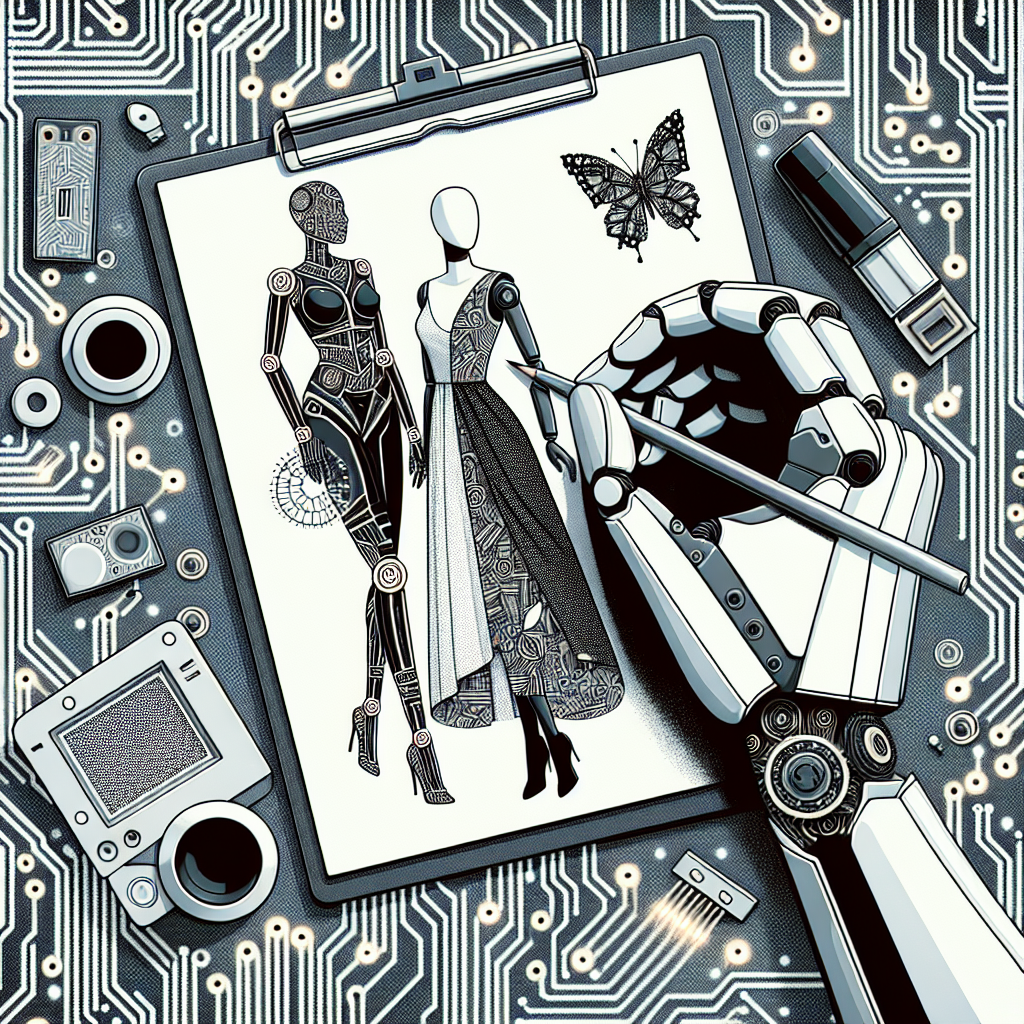Artificial Intelligence (AI) has been making waves in the fashion industry, redefining the design process and revolutionizing the way creative approaches are taken. From creating innovative designs to predicting trends, AI is transforming the way fashion designers work and helping them stay ahead of the curve. In this article, we will explore how AI is changing the fashion design process and the creative approaches that are being adopted in the industry.
AI in Fashion Design Process
The fashion design process has traditionally been a labor-intensive and time-consuming endeavor. Designers would spend hours sketching, draping, and prototyping before finalizing a design. With the advent of AI, this process has been streamlined and made more efficient. AI algorithms can analyze vast amounts of data, such as customer preferences, historical trends, and market demands, to generate design ideas and recommendations.
One of the key ways AI is redefining the fashion design process is through the use of generative design. Generative design is a process where AI algorithms are used to generate multiple design options based on a set of parameters. Designers can input criteria such as color, fabric, silhouette, and target audience, and the AI will generate a range of design options that meet these criteria. This allows designers to explore a wider range of possibilities and come up with more innovative and creative designs.
Another way AI is transforming the fashion design process is through the use of virtual prototyping. Virtual prototyping allows designers to create digital prototypes of their designs, which can be visualized in 3D and tested for fit, form, and function. This eliminates the need for physical prototypes, saving time and resources in the design process. AI algorithms can also analyze virtual prototypes to suggest improvements and optimizations, helping designers create better-fitting and more functional garments.
AI is also being used in the fashion design process to optimize production processes. AI algorithms can analyze production data to identify inefficiencies and bottlenecks in the manufacturing process, allowing designers to make informed decisions about production schedules, sourcing, and supply chain management. This can help reduce lead times, minimize waste, and improve overall production efficiency.
Creative Approaches in Fashion Design
AI is not just changing the technical aspects of the fashion design process; it is also influencing the creative approaches that designers are taking. AI is enabling designers to explore new design possibilities, experiment with unconventional materials and techniques, and push the boundaries of traditional fashion design.
One of the creative approaches that designers are taking with AI is the use of data-driven design. By analyzing customer data, social media trends, and market research, designers can identify emerging trends and consumer preferences, allowing them to create designs that are more in tune with what customers want. AI algorithms can also analyze design trends from past seasons to predict future trends, helping designers stay ahead of the curve.
Another creative approach that designers are taking with AI is the use of collaborative design tools. AI-powered tools such as virtual design assistants and augmented reality applications allow designers to collaborate with other team members, suppliers, and clients in real-time, regardless of physical location. This enables designers to work more efficiently, share ideas and feedback, and create designs that are truly collaborative and cross-disciplinary.
AI is also enabling designers to experiment with new materials and techniques. By using AI algorithms to analyze material properties, simulate fabric behavior, and predict garment performance, designers can push the boundaries of traditional fashion design and create garments that are more sustainable, durable, and functional. AI can also be used to optimize production processes, such as 3D printing and digital fabrication, allowing designers to create complex and intricate designs that were previously impossible to produce.
FAQs
Q: Can AI replace human designers in the fashion industry?
A: While AI can assist designers in the design process, it cannot replace human creativity and intuition. Designers bring a unique perspective, aesthetic sensibility, and emotional connection to their work that AI algorithms cannot replicate. AI is a tool to augment and enhance the creative process, not replace it.
Q: How can designers ensure that AI does not compromise their creative vision?
A: Designers can maintain their creative vision by using AI as a tool to support and enhance their ideas, rather than dictate or constrain them. By setting clear design goals, criteria, and parameters for AI algorithms to follow, designers can ensure that AI aligns with their creative vision and helps them achieve their design objectives.
Q: What are the ethical implications of using AI in the fashion industry?
A: The use of AI in the fashion industry raises ethical concerns around data privacy, bias, and transparency. Designers and brands must be mindful of the data they collect, how it is used, and who has access to it. They must also be aware of bias in AI algorithms and take steps to mitigate bias in design decisions. Transparency in AI processes and decision-making is essential to ensure ethical and responsible use of AI in the fashion industry.
In conclusion, AI is redefining the fashion design process and creative approaches in the industry. From generative design to virtual prototyping, AI is transforming the way designers work and helping them create innovative and sustainable designs. By embracing AI as a tool to augment and enhance their creative vision, designers can stay ahead of the curve and push the boundaries of traditional fashion design. With careful consideration of ethical implications and a collaborative approach to design, AI has the potential to revolutionize the fashion industry and drive innovation and creativity in new and exciting ways.

